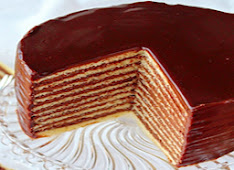God's Layer Cake

If you go paddling at the beach, you are likely to step onto sand – or if you are unlucky, INTO mud!
Now if you could get a submarine trip to the bottom of an ocean today, what would you find? In some places you’d find the same stuff - flat sheets of mud, and in other places a sandy ocean bed.
Sometimes ocean conditions change. Sand gets deposited, then mud gets deposited. So you get a sand and mud sandwich with one flat layer on top of another, at the bottom of the sea, stacking up deeper and deeper – sand – mud - sand – mud - more sand, more mud. It’s like a thick layer cake.
As more and more layers of sand and mud pile up, the stuff at the bottom is under huge pressure, and it very slowly it turns into rock layers – called mudstone and sandstone. Geologists can drill down into the ocean bed and that’s exactly what they find. Its like drilling into a chocolate cake of layered rocks. When geologists get layers of rock like this they call it stratification
This earthcache is going to show you some of this stratified chocolate cake rock, that was once at the bottom of an ocean, and has come up to the surface. Scientists reckon these rocks are 450 million years old! To log the earth cache you have to answer a two simple questions . . . . .
1. Look at the exposed layers of rock. How thick are the layers? In centimetres or inches, roughly what is the thickest layer and the thinnest layer? Why do you think these layers vary in thickness?
These layers, as you will notice are definitely not flat, like they would have been when they were first formed at the bottom of the sea. In fact they have been pushed sideways into a bent shape by huge geological forces. Imagine the force that was needed to bend this rock into such a shape.

Rocks that are bent into a downward shape are called synclines. And rocks that are bent up are called Anticlines. The shapes of the letters s and A may help you to remember which is which. And so here’s the second question . . . .
2. Is this a syncline or an anticline? What might have caused such bends in the rocks? Can you see any other bent rocks near this earthcache?
Send me the answers on the Geocaching page and I’ll give you the OK to log your find.
NOTE Hey – and there are NO caches to find in an earthcache. Just rockses, not boxes